Have you ever wondered what it takes for your computer to run Windows 10? It’s not just about having the latest gadgets. Many people assume any machine will work, but that’s far from true. Getting to know the minimum hardware requirements for Windows 10 is crucial. Without meeting these standards, you might face frustrating slowdowns or crashes.
Imagine trying to play a game, but your computer just freezes. That’s no fun! To enjoy a smooth experience, your hardware must align with Windows 10’s requirements. It’s like trying to fit a square peg in a round hole—if the requirements are not met, things won’t work as they should.
Did you know that even a simple program can struggle on older computers? This is why understanding the minimum hardware requirements is so important. With the right information, you can keep your computer happy and healthy. Let’s dive into the details and discover what your machine really needs!
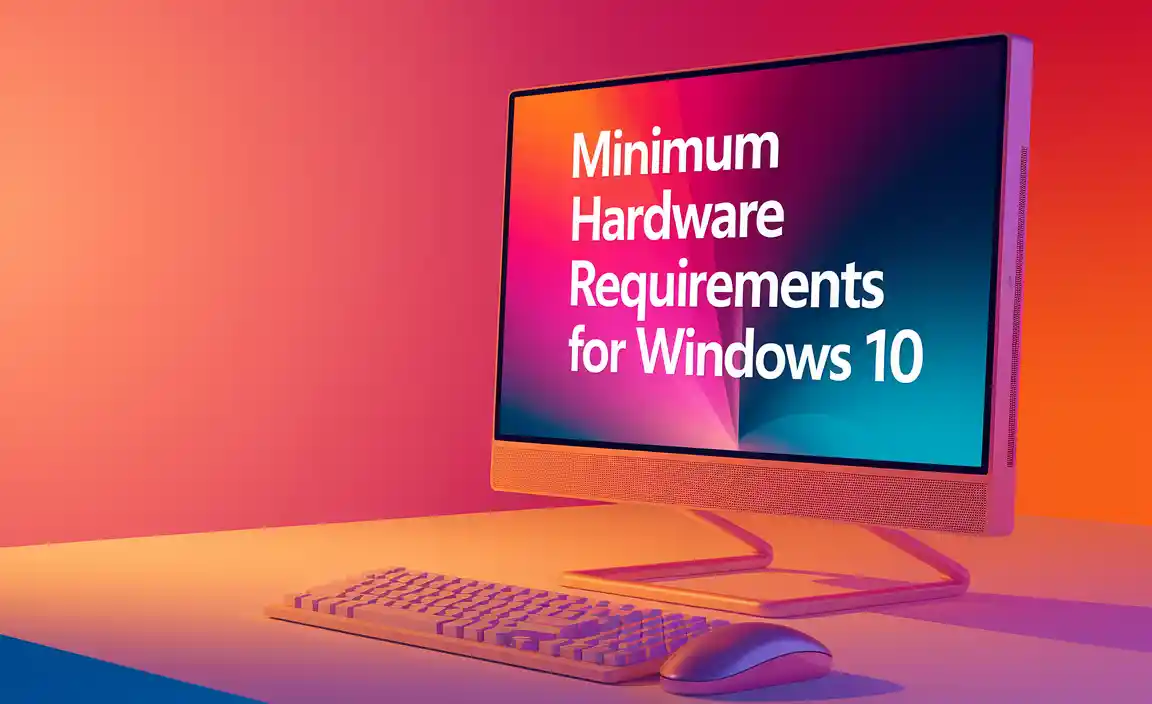
Minimum Hardware Requirements For Windows 10 Explained
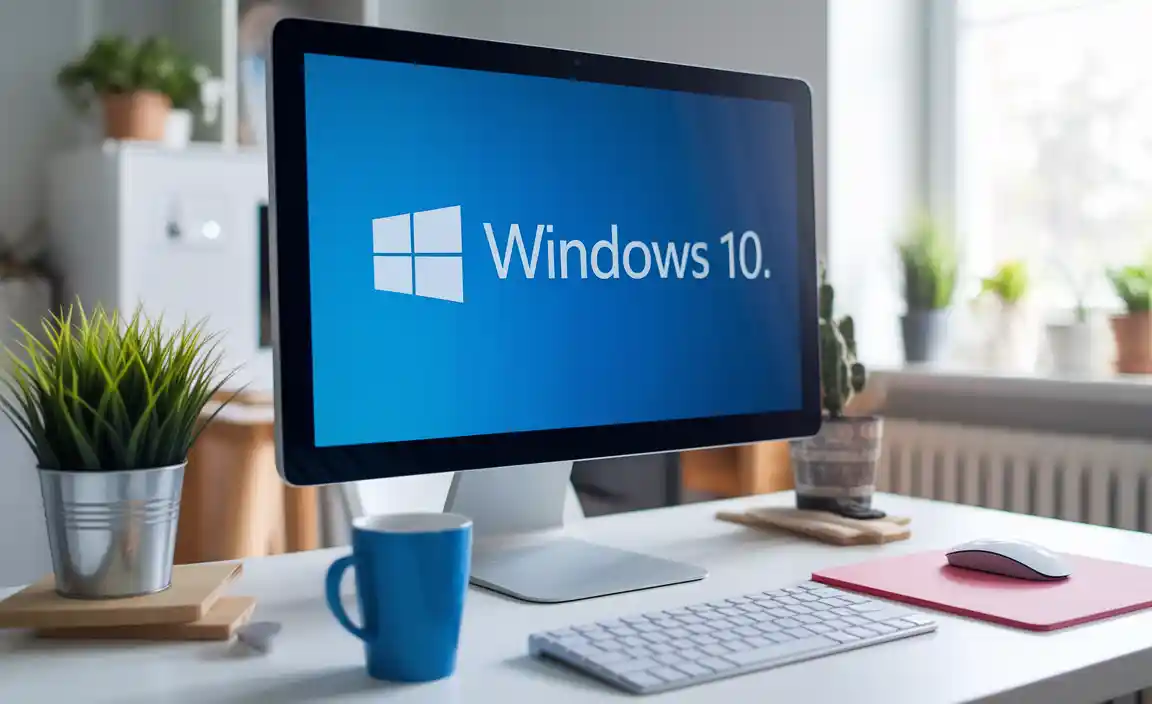
Processor Requirements
Minimum CPU specifications for running Windows 10. Recommended processors for enhanced performance.
To run Windows 10, you need a CPU that can keep up. The minimum requirement is a processor of 1 GHz or faster. But don’t stop there! For better performance, a speedy processor like an Intel Core i5 is a smart choice. It’s like choosing between a snail and a cheetah—go for the cheetah! Here’s a quick look:
| Minimum Processor | Recommended Processor |
|---|---|
| 1 GHz processor | Intel Core i5 or AMD Ryzen 5 |
| Supports 32-bit or 64-bit | Supports 64-bit for best results |
In short, choose wisely! Your CPU is like the brain of your computer, and it wants to be smart, not sluggish.
Memory Requirements
Minimum RAM specifications for different Windows 10 versions. Impact of RAM size on system performance and multitasking.
For smooth sailing on Windows 10, your computer needs enough RAM to keep everything running. The minimum RAM you need varies by version: 32-bit needs at least 1 GB, while the 64-bit version requires 2 GB. With more RAM, your device can juggle extra tasks without dropping the ball. More RAM means happier users—no one likes waiting for apps to load! Check out the table below for a quick reference:
| Windows Version | Minimum RAM Required |
|---|---|
| Windows 10 (32-bit) | 1 GB |
| Windows 10 (64-bit) | 2 GB |
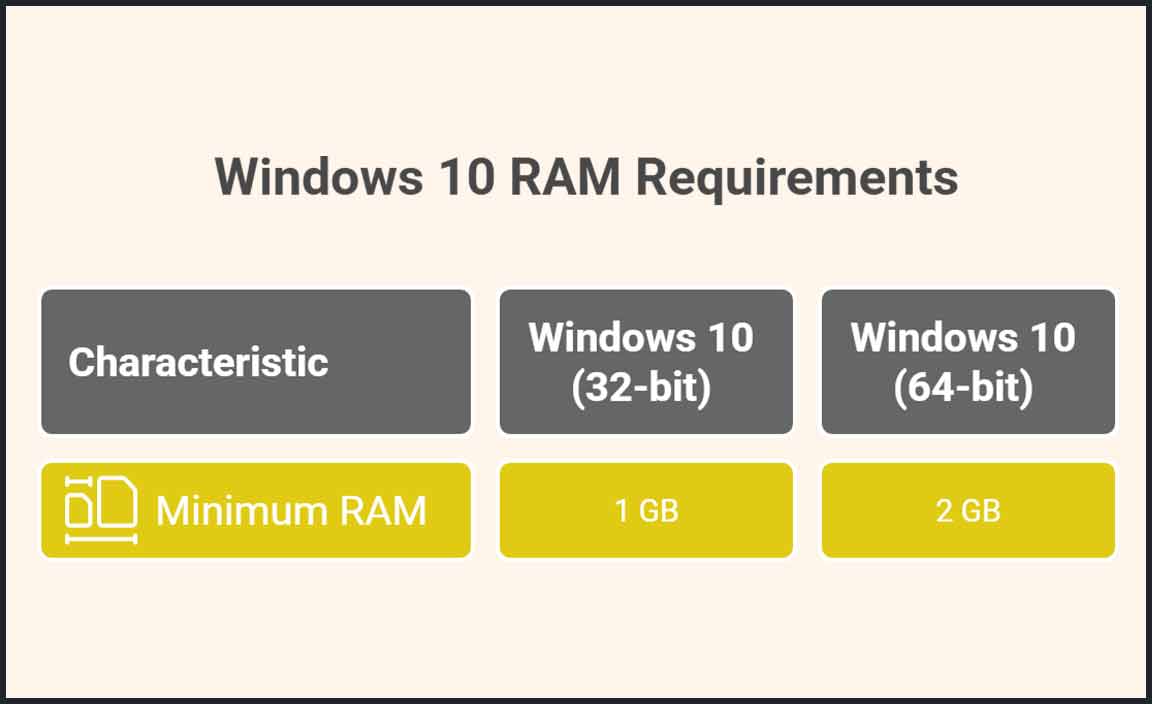
Remember, more RAM can boost your computer’s performance and make multitasking a breeze!
Storage Space Requirements
Minimum hard drive space needed for Windows 10 installation. Importance of SSD versus HDD for faster operation.
To set up Windows 10, you need at least 20 GB of free hard drive space. This space lets the system and updates work properly. But there’s more to think about! Using an SSD (Solid State Drive) instead of an HDD (Hard Disk Drive) can make your computer run much faster. SSDs help with quick loading times and better performance. Why wait when you can have speedy access?
What is the minimum hard drive space for Windows 10?
You need at least 20 GB of storage for Windows 10, but more space is better for updates and programs.
Benefits of SSD vs. HDD:
- Speed: SSDs are much quicker than HDDs.
- Durability: SSDs are less likely to break.
- No noise: SSDs run silently.
Graphics Requirements
Minimum graphics card specifications for Windows 10. Benefits of DirectX 12 support for gaming and multimedia applications.
To run Windows 10 smoothly, having the right graphics card is key. Your PC needs at least DirectX 9 support. This allows for clearer images and better gaming experiences. Using DirectX 12 is even better. It offers improved graphics and speed for games and multimedia. This means smoother motion and sharper details. Here are the minimum specs:
- Graphics card: DirectX 9 or higher
- Memory: 1 GB for 32-bit or 2 GB for 64-bit
With these features, games feel more realistic and fun!
What are the benefits of DirectX 12 support?
DirectX 12 support improves graphics and performance in games, making them look and run better.
Display Requirements
Minimum screen resolution for Windows 10 usability. Importance of touchscreen capability for enhanced user experience.
A good display is key for using Windows 10 well. The minimum screen resolution must be 800×600 pixels for basic tasks. This allows clear images and easy navigation. Also, having a touchscreen is very helpful. It makes using the computer more fun and easier, like using a tablet. You can tap, swipe, or pinch right on the screen. This feature improves the overall user experience by making it more interactive.
What is the minimum screen resolution for Windows 10?
The minimum screen resolution for Windows 10 is 800×600 pixels. This ensures that text and images are clear enough for users.
Benefits of Touchscreen Capability
- Makes navigation simpler
- Enhances user interaction
- Offers a tablet-like experience
Compatibility and Upgrade Considerations
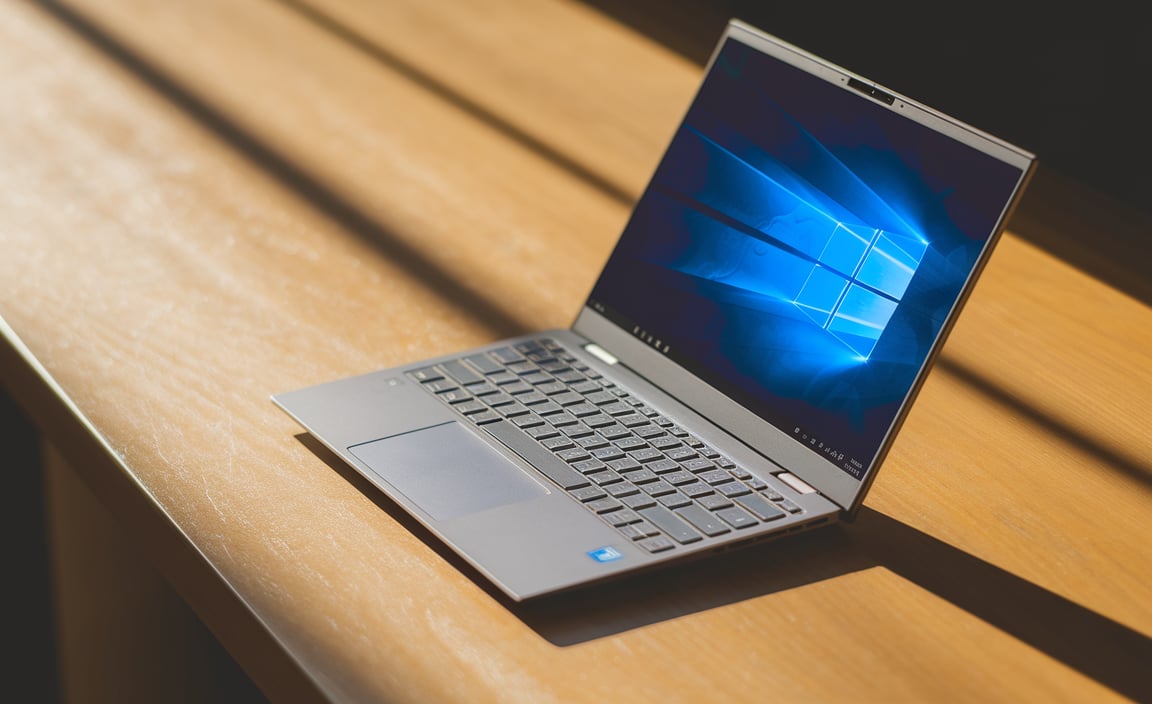
How to check if existing hardware meets Windows 10 requirements. Steps for upgrading hardware components for Windows 10 compatibility.
Before jumping into Windows 10, you should check if your computer can handle it. Start by looking at your hardware. To see if you meet the requirements, go to “Settings” and click on “System.” Then, find “About” to view your specs. If your processor is missing, it’s likely hiding under a pile of chips!
If you need a little hardware upgrade, don’t worry! You can easily replace parts like RAM or the hard drive. It’s like giving your computer a fresh haircut! Remember, you should aim for at least 1GHz for the processor and 2GB of RAM. We can’t be slouching here!
| Component | Requirement |
|---|---|
| Processor | 1 GHz or faster |
| RAM | At least 2 GB |
| Hard Disk Space | 20 GB free |
With these upgrades, your computer will be ready for the Windows 10 party! So, get those tools out and let’s rev up that machine!
Common Issues with Minimum Hardware Specifications
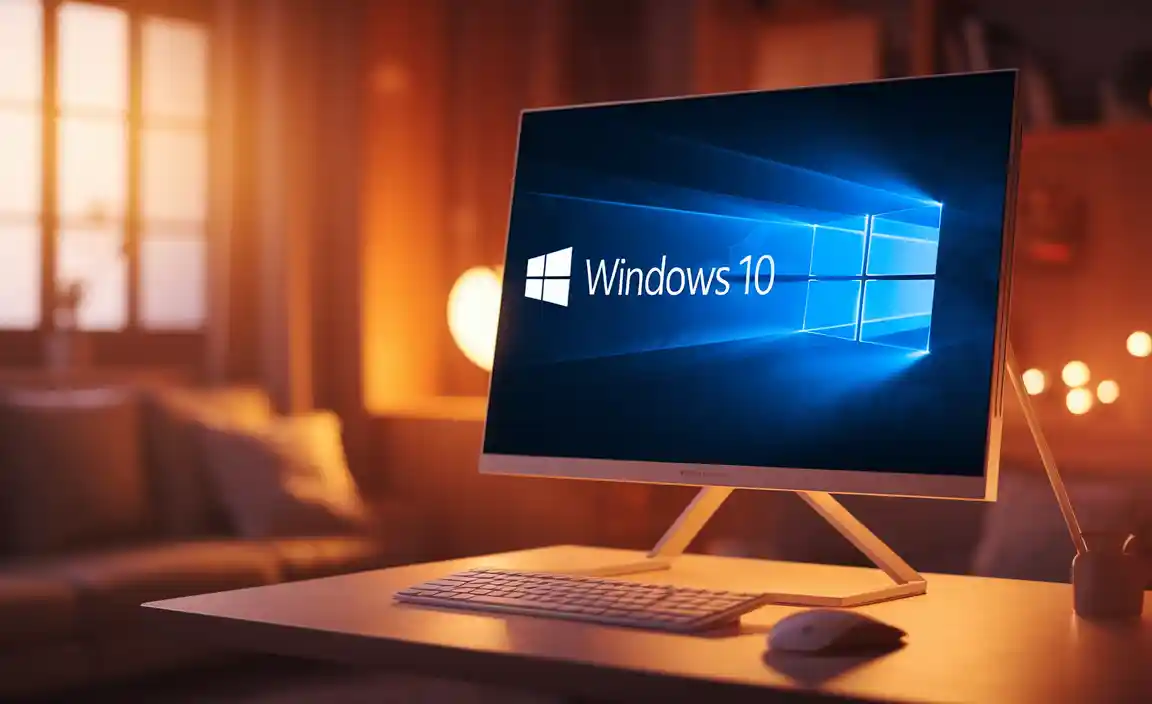
Potential performance bottlenecks with minimum hardware setups. Tips for troubleshooting and improving performance on older hardware.
Using Windows 10 on hardware that barely meets requirements can feel like trying to run a marathon in flip-flops. Expect slow speeds and more pauses than your favorite TV show. Performance bottlenecks happen due to limited CPU power or low memory. Regularly updating drivers can help speed things up. Also, closing unnecessary apps frees up resources. So, if your computer seems to be on vacation, try these tips!
| Issue | Tip |
|---|---|
| Slow performance | Close unused applications. |
| Lagging games | Update your GPU drivers. |
| Freezing | Upgrade RAM if possible. |
Conclusion
In summary, the minimum hardware requirements for Windows 10 are essential for a smooth experience. You need at least 1 GHz processor, 2 GB RAM, and 20 GB storage. Make sure your device meets these needs before upgrading. If you’re unsure, we encourage you to check your system specs. For more details, explore official Windows resources!
FAQs
Here Are Five Related Questions On The Topic Of Minimum Hardware Requirements For Windows 10:
Windows 10 needs some basic things to work well. First, your computer should have at least 1 gigahertz (GHz) processor. You also need 1 gigabyte (GB) of RAM if it’s a 32-bit system or 2 GB for a 64-bit system. For storage, you need 16 GB for a 32-bit version and 20 GB for a 64-bit version. Lastly, your screen must be at least 800 x 600 pixels to see everything clearly.
Sure! Just let me know what question you’d like me to answer.
What Are The Minimum Processor Requirements For Installing Windows 10?
To install Windows 10, your computer needs a processor, which is like the brain of the computer. It should be at least 1 gigahertz (GHz) or faster. The processor also needs to have at least two cores, which means it can think about two things at once. This helps your computer run smoothly.
How Much Ram Is Required For A Basic Installation Of Windows 10?
To run Windows 10, you need at least 2 gigabytes (GB) of RAM. That’s the memory your computer uses to run programs. If you have 4 GB or more, your computer will work even better. So, having more RAM helps everything run smoothly!
What Type Of Storage Is Necessary, And What Is The Minimum Hard Drive Space Required For Windows 10?
To use Windows 10, you need a hard drive or an SSD (Solid State Drive) for storage. The minimum space you need is 32 gigabytes (GB). This is enough for the system to run. However, having more space is better for apps and files.
Are There Specific Graphics Hardware Requirements For Running Windows Effectively?
Yes, there are some graphics hardware requirements for running Windows. You need a graphics card that can show pictures well. Most computers today have good graphics cards. If you want to play games or use special programs, you might need a better one.
How Do The Minimum Hardware Requirements For Windows Differ From Those Of Its Predecessor, Windows 7?
Windows 10 needs a bit more power than Windows 7. For example, Windows 10 requires a 1 GHz processor, while Windows 7 can work with a slower one. You also need at least 1 GB of RAM for a 32-bit version of Windows 10, but you only needed 1 GB for Windows 7. Plus, Windows 10 needs more free space on your hard drive. It’s important to have the right gear to enjoy the newer features!
Resource:
-
Microsoft Windows 10 system requirements: https://support.microsoft.com/en-us/windows/windows-10-specifications-2f2407bf-250a-4479-82f4-fb7e6a1f9363
-
How to check your PC specs: https://www.tomshardware.com/how-to/check-pc-specs
-
SSD vs HDD explained: https://www.pcmag.com/news/ssd-vs-hdd-whats-the-difference
-
Best graphics cards for Windows 10: https://www.techradar.com/news/best-graphics-card
